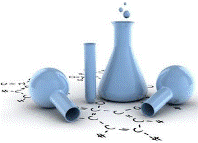Chemical and Biomolecular Engineering, Department of
ORCID IDs
http://orcid.org/0000-0002-2974-0243
Date of this Version
2020
Document Type
Article
Citation
Scientific RepoRtS |(2020) 10:9241 | https://doi.org/10.1038/s41598-020-65457-4
Abstract
in this work we introduce the generalized optimization- and explicit Runge-Kutta-based Approach (oRKA) to perform dynamic flux Balance Analysis (dfBA), which is numerically more accurate and computationally tractable than existing approaches. oRKA is applied to a four-tissue (leaf, root, seed, and stem) model of Arabidopsis thaliana, p-ath773, uniquely capturing the core-metabolism of several stages of growth from seedling to senescence at hourly intervals. Model p-ath773 has been designed to show broad agreement with published plant-scale properties such as mass, maintenance, and senescence, yet leaving reaction-level behavior unconstrainted. Hence, it serves as a framework to study the reaction-level behavior necessary for observed plant-scale behavior. Two such case studies of reaction-level behavior include the lifecycle progression of sulfur metabolism and the diurnal flow of water throughout the plant. Specifically, p-ath773 shows how transpiration drives water flow through the plant and how water produced by leaf tissue metabolism may contribute significantly to transpired water. Investigation of sulfur metabolism elucidates frequent cross-compartment exchange of a standing pool of amino acids which is used to regulate the proton flow. Overall, p-ath773 and ORKA serve as scaffolds for dFBA-based lifecycle modeling of plants and other systems to further broaden the scope of in silico metabolic investigation.



Comments
The Author(s) 2020